The Remarkable Evolution of the Potato Peeler: A Kitchen Revolution in Metal and Plastic
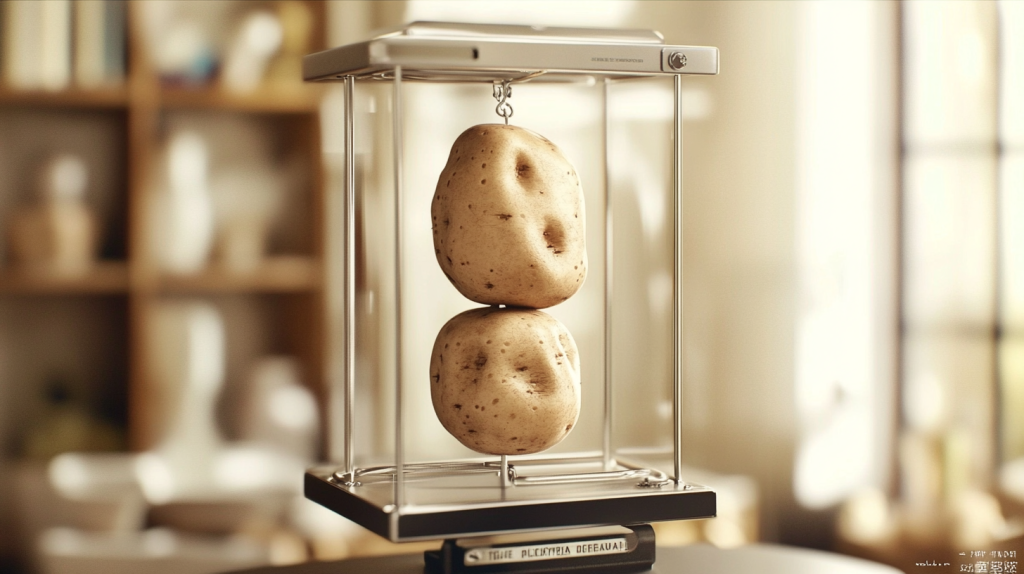
The Early Days of Potato Preparation
Long before the invention of the modern potato peeler, humans had been struggling with the mundane yet necessary task of removing potato skins using an array of implements including sharpened stones, crude metal blades, and ordinary knives, which not only made the task time-consuming but also potentially dangerous, as the slippery nature of wet potatoes combined with sharp implements led to countless minor kitchen injuries throughout history. The process of peeling potatoes remained largely unchanged from the introduction of potatoes to Europe in the 16th century until the late Victorian era, when the industrial revolution began to transform even the humblest of kitchen tasks into opportunities for mechanical innovation.
The Lancashire Potato Peeler Revolution
In what would prove to be a pivotal moment in culinary history, Alfred Newbound of Leigh, Lancashire, filed a patent in 1921 for what he called an “improved potato peeler,” featuring a floating blade design that would fundamentally transform the way humans prepare potatoes and other vegetables, though the true story begins several decades earlier with various attempts at creating similar implements across Europe and America, where the growing popularity of potatoes as a dietary staple was driving innovation in food preparation tools. Newbound’s design was revolutionary because it incorporated a double-edge blade that swiveled, allowing it to follow the contours of the potato’s surface while maintaining consistent pressure and removing only the thinnest layer of skin, thus minimizing waste and maximizing efficiency in a way that had never been achieved before.

The Rex Peeler Phenomenon
The real breakthrough in potato peeler design came in 1947 when Alfred Newbound’s son John collaborated with Swiss inventor Alfred Zwygart to create what would become known as the Rex Peeler, a design so fundamentally sound that it remains virtually unchanged to this day, featuring a seemingly simple yet ingeniously engineered aluminum casting with a pivoting stainless steel blade that could be easily replaced when worn. The Rex Peeler’s success was immediate and profound, quickly becoming the standard against which all other peelers would be measured, and its influence can be seen in virtually every modern peeler design, regardless of manufacturer or specific features.
Mass Production and Modern Innovation
The post-war economic boom saw an explosion in kitchen gadget innovation, with companies across the globe producing variations on the basic peeler design, incorporating new materials such as plastics and stainless steel, and experimenting with handle designs and blade configurations that would make the tools more comfortable and efficient for both home cooks and professional chefs. The introduction of dishwasher-safe materials and ergonomic handle designs in the 1970s and 1980s further revolutionized the humble peeler, making it more accessible and convenient for the average home cook while maintaining the essential functionality that made the original designs so successful.
The Rise of Specialized Peelers
As cooking became more sophisticated and global cuisines more accessible, manufacturers began developing specialized peelers designed for specific tasks beyond simple potato peeling, including julienne peelers for creating vegetable strips, serrated peelers for soft-skinned fruits and vegetables, and ceramic-bladed peelers that promised to stay sharp longer than their metal counterparts. This diversification of peeler types reflects not only advances in manufacturing technology but also the increasingly sophisticated demands of modern cooks who expect their tools to be versatile, efficient, and durable.
Common Peeler Types Reviewed
1. The Classic Lancashire-Style Straight Peeler
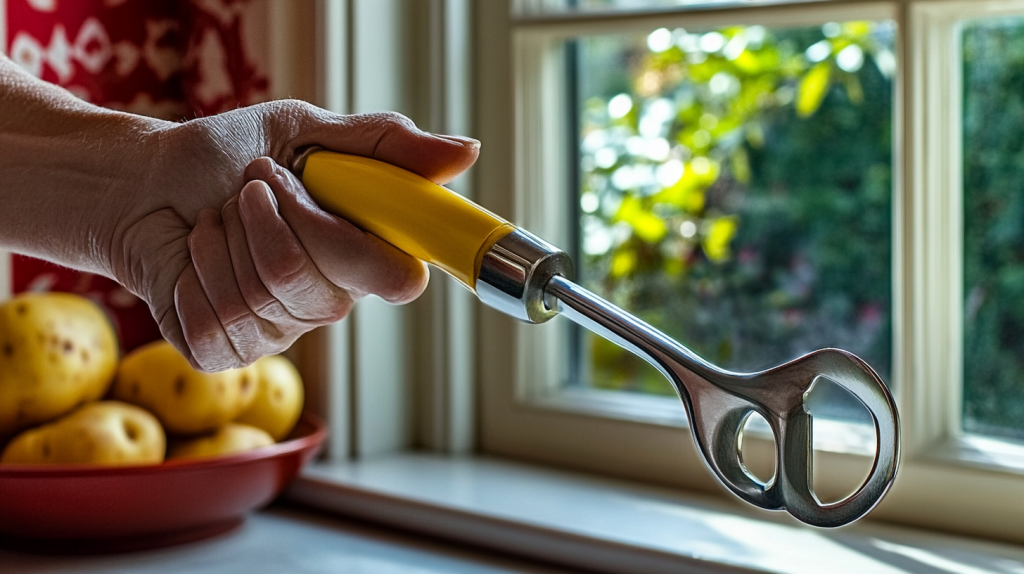
Price Range: $8-15
★★★★☆
The traditional straight peeler, directly descended from Newbound’s original design, remains one of the most popular and versatile options available to the modern cook, featuring a straight handle with a fixed blade that runs perpendicular to the handle’s axis.
Pros:
- Excellent control and precision
- Familiar design that most users intuitively understand
- Generally dishwasher safe
- Replaceable blades available
- Works well for long, straight vegetables
Cons:
- Can be tiring during extended use
- May struggle with curved surfaces
- Usually requires more wrist action than Y-peelers
- Basic models can rust if not dried properly
Best for: Daily home use, professional kitchens, and those who prefer traditional tools.
2. The Swiss-Style Y-Peeler
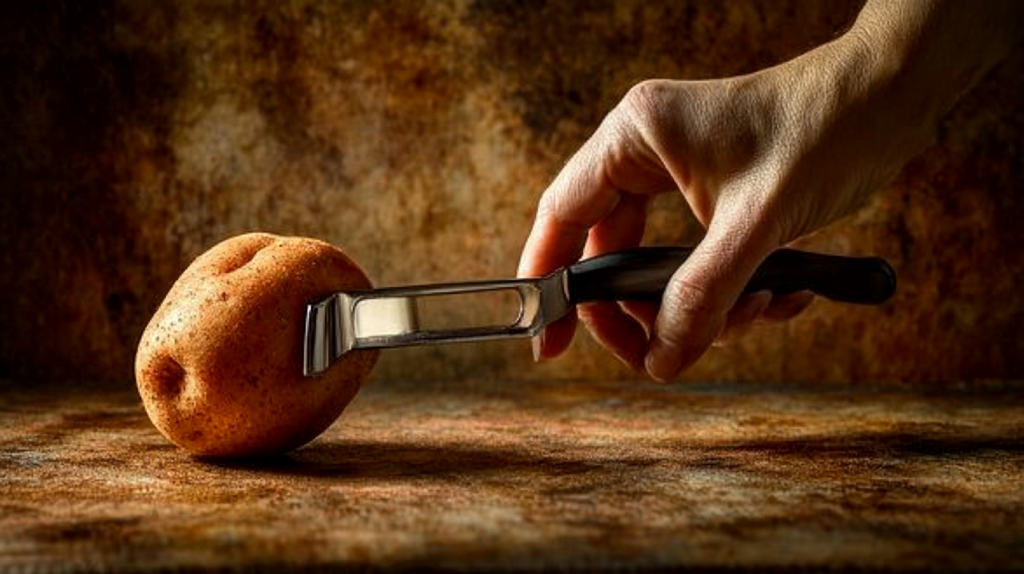
Price Range: $12-20
★★★★★
Named for its characteristic Y-shaped design, this style has become increasingly popular in professional kitchens due to its ergonomic handling and versatility.
Pros:
- Excellent ergonomics for extended use
- Superior control around curves
- Requires less wrist movement
- Often features wider blades for faster peeling
- Comfortable grip for various hand sizes
Cons:
- Takes some practice to master
- More expensive than straight peelers
- Blade replacement can be more complicated
- Bulkier to store
Best for: Professional chefs, those with arthritis or hand strength issues, and high-volume peeling tasks.
3. The Modern Ceramic-Blade Peeler
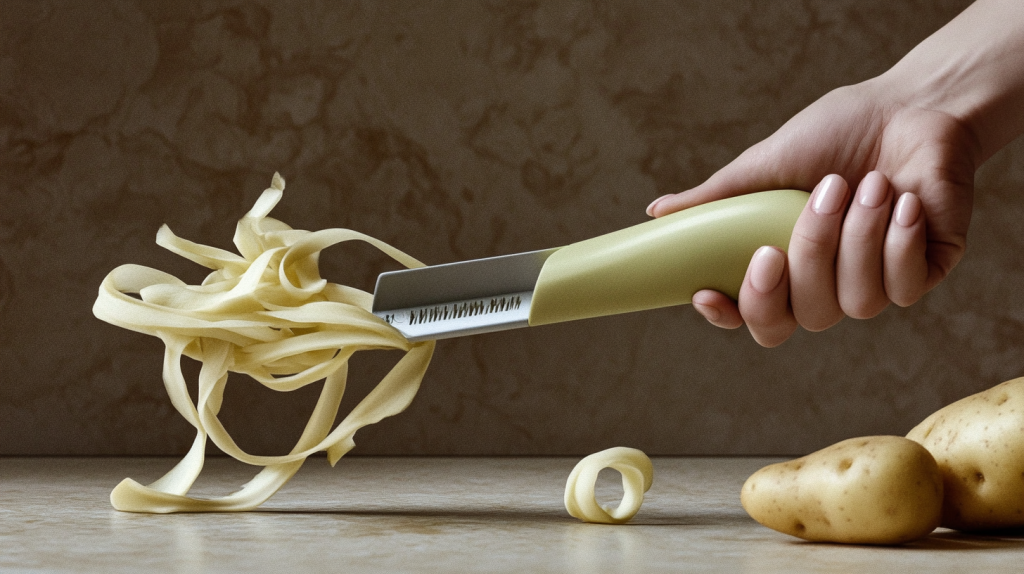
Price Range: $15-25
★★★★☆
A relatively recent innovation, ceramic-blade peelers promise exceptional sharpness and durability, though they come with their own set of considerations.
Pros:
- Extremely sharp blades that stay sharp longer
- No rusting or oxidation
- Lighter weight than metal peelers
- Often dishwasher safe
- Won’t react with acidic foods
Cons:
- Blades can chip if dropped
- Cannot be resharpened
- More expensive than metal alternatives
- Limited blade replacement options
- May break if flexed too aggressively
Best for: Home cooks who prioritize longevity and don’t mind paying more for a premium tool, those who frequently process acidic vegetables, and users who appreciate lighter weight tools.
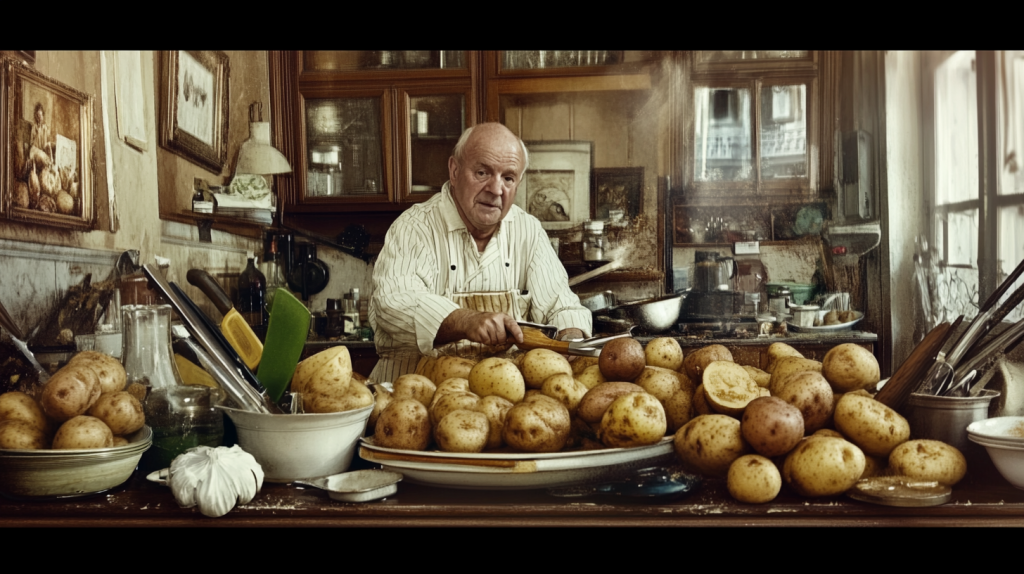
No more peelers, please.